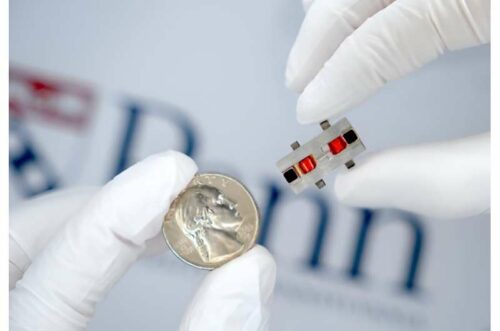This new filter, utilizing Yttrium Iron Garnet (YIG) technology, can prevent interference even in higher-frequency bands and could be pivotal for the future of 6G networks.

LightSquared, a startup in cellular communications, declared bankruptcy due to signal interference with GPS systems. Penn Engineers have now developed an adjustable filter to prevent such interference, even in higher-frequency bands. Troy Olsson, Associate Professor in Electrical and Systems Engineering at Penn Engineering, and senior author of a paper in *Nature Communications*, hopes this tool will advance wireless communications.
The electromagnetic spectrum, crucial for modern wireless communication, is mostly limited to radio waves. The Federal Communications Commission (FCC) recently made the Frequency Range 3 (FR3) band, including 7 GHz to 24 GHz frequencies, available for commercial use. Wireless communications have traditionally used lower-frequency bands, from 600 MHz to 6 GHz, covering 5G, 4G, and 3G. Different filters are used for different frequencies, resulting in numerous filters in devices like smartphones to prevent signal interference.
Yttrium Iron Garnet (YIG) Technology
The team that the FR3 band is expected to be utilized for 6G or Next G networks. Current small-filter and low-loss switch technologies for these bands are limited. The new adjustable filter offers a solution, eliminating the need for numerous filters and switches in devices. High-frequency bands face the challenge of reserved frequencies for satellites and military use. The team designed the adjustable filter to selectively filter different frequencies. The filter’s adjustability is due to “yttrium iron garnet” (YIG), a material that propagates a magnetic spin wave. Exposing YIG to a magnetic field changes the wave’s frequency.The researchers explains that the YIG filter achieves continuous frequency tuning across a broad frequency band by adjusting the magnetic field.
The new filter covers frequencies between 3.4 GHz and 11.1 GHz, aligning with the new FCC territory in the FR3 band. The filter is also compact, about the size of a quarter, contrasting with previous larger YIG filters. The small size is attributed to a zero-static-power, magnetic-bias circuit requiring minimal power. This novel circuit, combined with thin YIG films micromachined at the Singh Center for Nanotechnology, reduced the filter’s power consumption and size by ten times.
Refrence:Xingyu Du et al, Frequency tunable magnetostatic wave filters with zero static power magnetic biasing circuitry, Nature Communications (2024). DOI: 10.1038/s41467-024-47822-3






